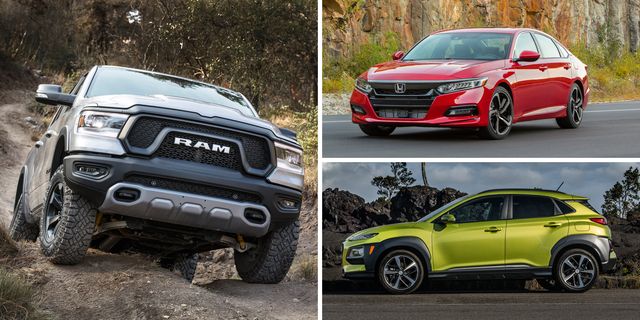
We break down the hundreds of models for sale today into a tidy group of car body types for easier shopping.
By James Riswick Updated: Aug 1, 2019 Save Article
There's a world of choice in today's car market, what with more than 400 different models and many car types available. Making sense of it all can be difficult. What are the different types of cars? The first thing to know is that "cars" means "passenger vehicles of all types." For the purposes of keeping it simple, we've broken down all of those vehicle choices into nine major categories covering all of the basic types of vehicles from coupes to full-size sedans to crossover SUVs.
The easiest way to define a vehicle is by how it looks. What's the first thing you notice when a vehicle comes toward you on the street? Its shape. That's called the "body style." Is it tall and boxy? Low and sleek? How many doors does it have? Body style is the easiest way to categorize a vehicle.

A sedan has four doors and a traditional trunk. Like vehicles in many categories, they're available in a range of sizes from small (subcompact vehicles like Nissan Versa and Kia Rio) to compacts (Honda Civic, Toyota Corolla) to mid-size (Honda Accord, Nissan Altima), and full-size (Toyota Avalon, Dodge Charger). Luxury brands like Mercedes-Benz and Lexus have sedans in similar sizes as well.

Mercedes-Benz
A coupe has historically been considered a two-door car with a trunk and a solid roof. This would include cars like a Ford Mustang or Audi A5—or even two-seat sports cars like the Chevrolet Corvette and Porsche Boxster. Recently, however, car companies have started to apply the word "coupe" to four-door cars or crossovers with low, sleek rooflines that they deem "coupe-like." This includes vehicles as disparate as a Mercedes-Benz CLS sedan and BMW X6 SUV. At Car and Driver, we still consider a coupe to be a two-door car.